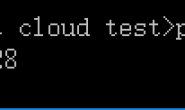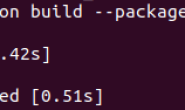python实现选择排序算法
def ssort(V): #V is the list to be sorted
j = 0 #j is the "current" ordered position, starting with the first one in the list
while j != len(V): #this is the replacing that ends when it reaches the end of the list
for i in range(j, len(V)): #here it replaces the minor value that it finds with j position
if V[i] < V[j]: #but it does it for every value minor than position j
V[j],V[i] = V[i],V[j]
j = j+1 #and here's the addiction that limits the verification to only the next values
return V
另外一个方法
def selection_sort(list):
l=list[:] # create a copy of the list
sorted=[] # this new list will hold the results
while len(l): # while there are elements to sort...
lowest=l[0] # create a variable to identify lowest
for x in l: # and check every item in the list...
if x<lowest: # to see if it might be lower.
lowest=x
sorted.append(lowest) # add the lowest one to the new list
l.remove(lowest) # and delete it from the old one
return sorted
代码3
a=input("Enter the length of the list :") # too ask the user length of the list
l=[] # take a emty list
for g in range (a): # for append the values from user
b=input("Enter the element :") # to ask the user to give list values
l.append(b) # to append a values in a empty list l
print "The given eliments list is",l
for i in range (len(l)): # to repeat the loop take length of l
index=i # to store the values i in string index
num=l[i] # to take first value in list and store in num
for j in range(i+1,len(l)): # to find out the small value in a list read all values
if num>l[j]: # to compare two values which store in num and list
index=j # to store the small value of the loop j in index
num=l[j] # to store small charecter are value in num
tem=l[i] # to swap the list take the temparary list stor list vlaues
l[i]=l[index] # to take first value as another
l[index]=tem
print "After the swping the list by selection sort is",l



